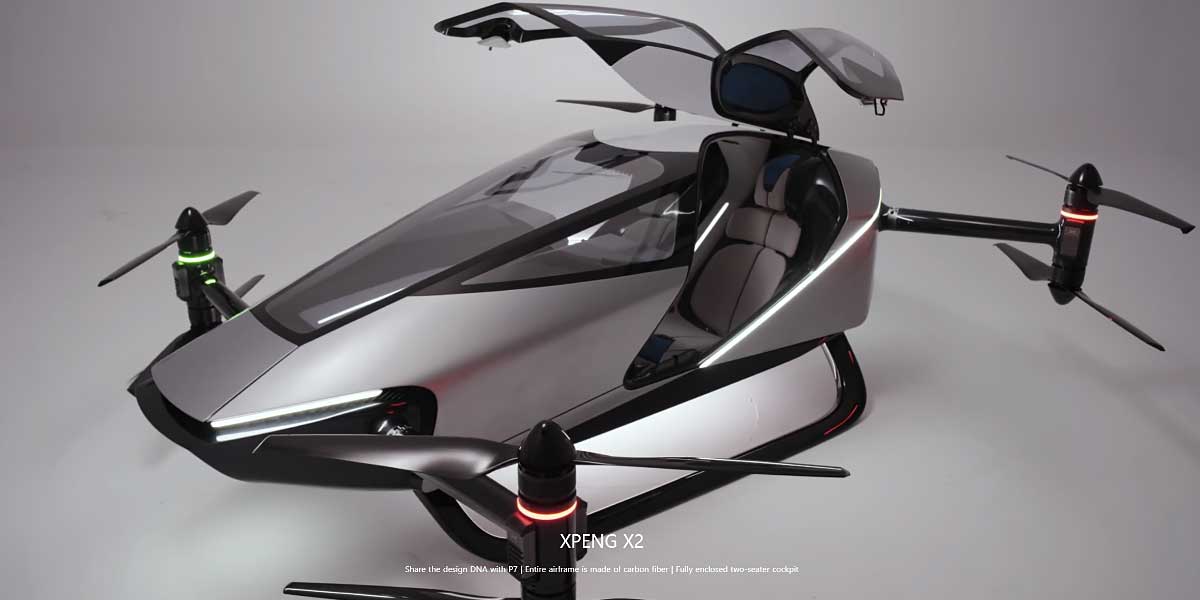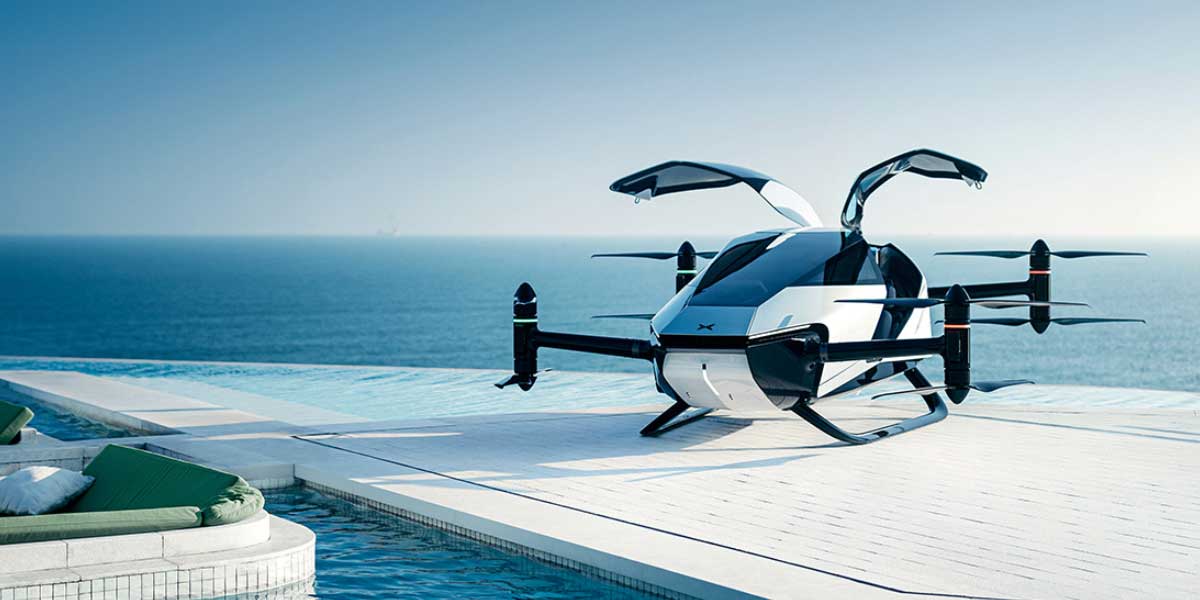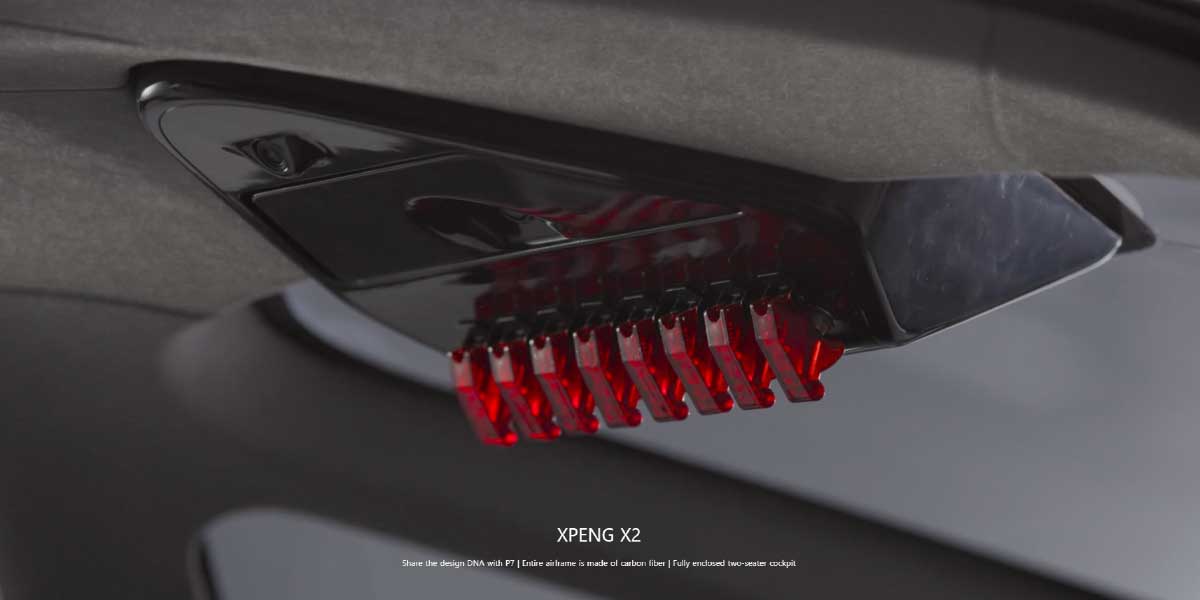XPeng AeroHT Voyager X2
User Rating: 3.87 / 5





What is the XPeng AeroHT Voyager X2?
XPeng AeroHT Voyager X2 is a next-generation electric vertical takeoff and landing (eVTOL) aircraft designed for personal air travel. This sleek, compact vehicle offers zero-emission flight, automatic navigation, and advanced safety features, making urban air mobility a reality.
XPeng AeroHT Voyager X2 price:
US$ 126000 *
| manufactured in | China |
| model year | 2024 |
| flying time (min) | 35 |
| max. speed (km/h) | 130 |
| weight (kg) | 360 |
* Minimum price set by the manufacturer, excluding taxes and additional options

Exterior and Interior photos of XPeng AeroHT Voyager X2
XPeng AeroHT Voyager X2 Review
Embarking on a Flight into the Future: XPeng AeroHT Voyager X2 Electric Flying EV Reviewed
Soar into the skies and leave mundane travel behind with the extraordinary XPeng AeroHT Voyager X2. Emerging from the bustling tech metropolis of Guangzhou, China, XPeng AeroHT is crafting the future of aerial mobility. Join me as we ascend to explore the sophisticated intricacies, avant-garde designs, and remarkable safety innovations of the Voyager X2. With the starting price hovering around $126,000, the XPeng Voyager X2 is poised to be an exclusive yet pioneering addition to the air mobility sector.
Flight of Innovation: Technical Specifications Unveiled
Set to launch triumphantly in 2024, the XPeng AeroHT Voyager X2 is here to revolutionize our perceptions of flight. This electric vertical takeoff and landing (eVTOL) marvel, designed for two passengers, harmoniously marries elegance with engineering prowess. Weighing a mere 794 pounds (360 kilograms), it can reach a phenomenal top speed of approximately 81 mph (130 km/h), offering an aerial experience lasting 35 minutes. Its construction comprises a meticulous blend of carbon fiber composite and aviation aluminum, epitomizing a seamless fusion of aesthetics and performance.
Birth of a Skyward Legacy: The Genesis of XPeng AeroHT
In an era ripe with innovation, XPeng AeroHT, a subsidiary of XPeng Motors, took its inaugural flight in 2020. Initially born as Heitech in 2013 under the vision of Zhao Deli, it found a new lease on life upon joining the XPeng family. Guided by the indomitable He Xiaopeng and Zhao Deli, XPeng AeroHT has swiftly ascended as a formidable force in the electric aerial domain, striving to reshape the heavens of tomorrow.
The Quintessence of Safety: Embracing the Future Fearlessly
The XPeng Voyager X2 stands as a paragon of aeronautical safety, adorned with state-of-the-art features such as distributed electric propulsion (DEP) for inherent redundancy. It serves as a vigilant guardian in the skies with safeguards including spherical environment detection, autonomous return capabilities, and an emergency ballistic parachute. Enhanced by an omnidirectional camera and real-time video streaming, it offers unparalleled situational awareness, assuring a serene airborne experience.
The Dawn of Aerial Elegance: A Tale of Design and Comfort
Designed to blend seamlessly with modern life, the Voyager X2’s compact form allows it to nestle snugly within a standard parking space, a testament to its practical elegance. Adorned with four small wheeled-dollies for effortless ground maneuverability, this aircraft keeps convenience at the forefront. The canopy crowning the cockpit invites passengers to a realm where panoramic vistas unfold, ushering an art form into the realm of travel.
The Path to the Skies: A Timeline to Takeoff
Captivating audiences at showcases across Shanghai and Europe, the XPeng Voyager X2 offers a glimpse into the air mobility utopia of the future. With a price range oscillating between $126,000 and $236,000, anticipation mounts for its serial production, with inaugural flights slated for European skies in 2024. Stay tuned as this aerial marvel prepares to redefine our future transport paradigms.
Manufacturer: Xpeng Aeroht
Related Video
Comparison:
Charging Speed and Power Output
The XPeng AeroHT Voyager X2, a slick wonder with its 300 kWh battery, promises a full charge in just 2 hours with a fast charger. The power output? Impressive 150 kW, making it a beast in the sky. Meanwhile, the Jetson ONE lags with its 60 kWh battery, taking a not-so-swift 4 hours to charge, producing a modest 85 kW. The Volocopter VC2X doesn’t fare much better either, needing 3.5 hours for its 90 kWh battery at 100 kW output. Now, the nimble SkyDrive SD-03 touts a 120 kWh battery and takes a commendable 3 hours to fully charge. The EHang 216 isnt far behind, requiring 3.5 hours for its 110 kWh battery with an average output of 110 kW. All in all, XPengs pacing itself quite ahead.
Connector Types and Compatibility
Moving on to those engineering marvels known as connectors, XPengs Voyager X2 uses the universal CCS1, befitting its global approach. The Jetson ONE sticks with Type 2, not bad if you’re grounded in Europe. The Volocopter VC2X uses CCS2, while the SkyDrive SD-03 flirts with CHAdeMO. Then theres EHang 216 which also opts for Type 2. The XPeng clearly demonstrates diversified these gizmos can be, blending right in with most international grids.
Cost and Pricing Models
You get what you pay for with these bad boys. The XPeng AeroHT Voyager X2 sits at a well-priced $126,000, a neat £100,000, or €118,000. The spunky Jetson ONE? A thrifty $92,000. The Volocopter VC2X is pricier at $145,000. The SkyDrive SD-03 sits comfortably at $104,000, and lastly, the EHang 216 takes the crown of expense at a solid $160,000. XPeng strikes a formidable balance between power and affordability.
Availability and Accessibility
The Voyager X2 has a slight edge in availability, already carving a niche in major markets across the US, UK, and EU. The Jetson ONE is still limited to pre-orders in North America and Europe. The Volocopter VC2X is more accessible but primarily Europe-focused. The SkyDrive SD-03 is still Japan-centric with limited international pilots. Finally, EHang 216, while available globally, remains largely in China. XPeng simply covers more ground.
Charging Station Features
XPengs Voyager X2 offers onboard diagnostics, charging reliability, and smart grid compatibility. The Jetson ONE provides basic plug-in convenience. The Volocopter VC2X boasts an efficient integrated system, whereas the SkyDrive SD-03 opts for a minimalistic but functional approach. The EHang 216 edges in with automated docking stations. Here, XPeng blends adaptability with cutting-edge tech.
Price
With a heavy-hitting value proposition, the XPeng AeroHT Voyager X2s markup of $126,000, £100,000, or €118,000 looks rather compelling compared to competitors. Jetson ONE offers entry at $92,000; Volocopter VC2X hits $145,000; SkyDrive SD-03 goes for $104,000; and EHang 216 tops the table at $160,000. Essentially, XPeng provides a blend of upper-tier performance at a lower-tier price.
The XPeng AeroHT Voyager X2 shakes the crowd with charging velocity, multicultural connector compatibility, accessible pricing, and broad market availability. The underdog flexes its might in a fleet where most of its rivals miss that mark.F.A.Q.:
What is the initial purchase price of the XPeng AeroHT Voyager X2?
The initial purchase price of the XPeng AeroHT Voyager X2 is $126,000, which is approximately €115,600 or £103,800 based on current exchange rates.
How long does the battery last on a full charge?
On a full charge, the XPeng AeroHT Voyager X2 can last up to 35 minutes.
What is the battery capacity and how long does it take to charge?
The battery capacity of the XPeng AeroHT Voyager X2 is 97 kWh, and it takes approximately 8 hours to fully charge using a standard 220V outlet.
What is the top speed of the XPeng AeroHT Voyager X2?
The top speed of the XPeng AeroHT Voyager X2 is around 130 km/h, which is roughly 80 mph.
How many passengers can the XPeng AeroHT Voyager X2 accommodate?
The XPeng AeroHT Voyager X2 can accommodate up to 2 passengers.
What safety features are included?
The XPeng AeroHT Voyager X2 includes several safety features such as seat belts, emergency parachutes, obstacle detection, and autonomous landing capabilities.
What additional features are available?
The XPeng AeroHT Voyager X2 comes equipped with advanced navigation systems, GPS, and a state-of-the-art communication system for real-time updates and monitoring.





